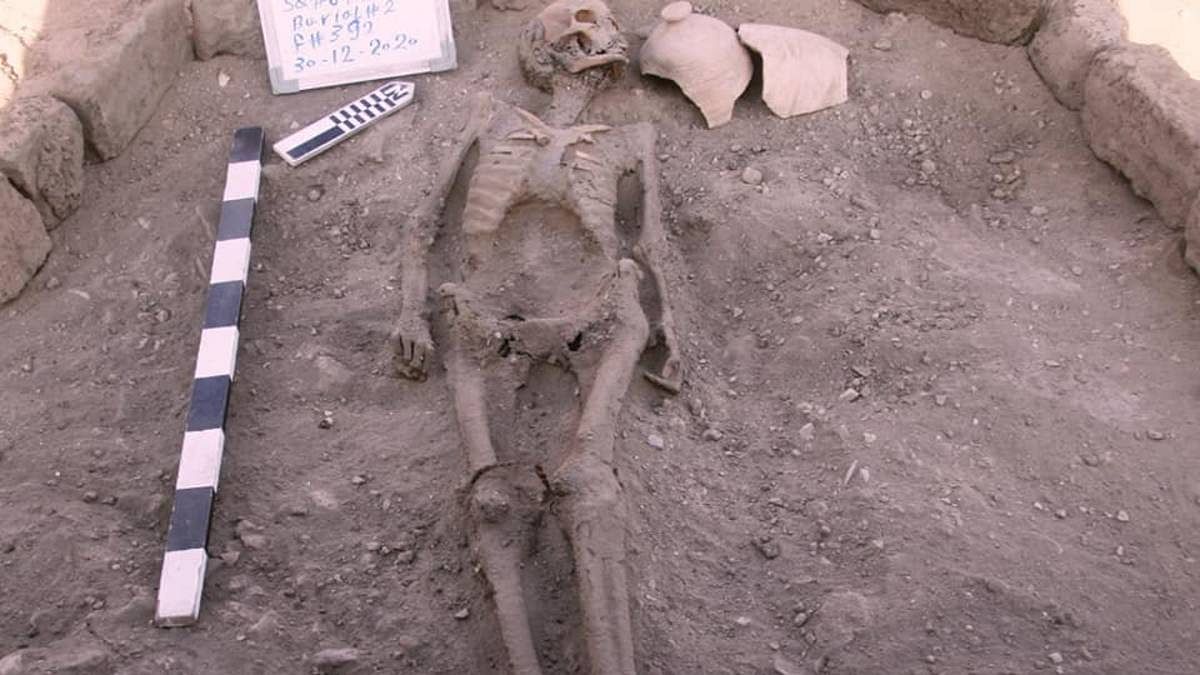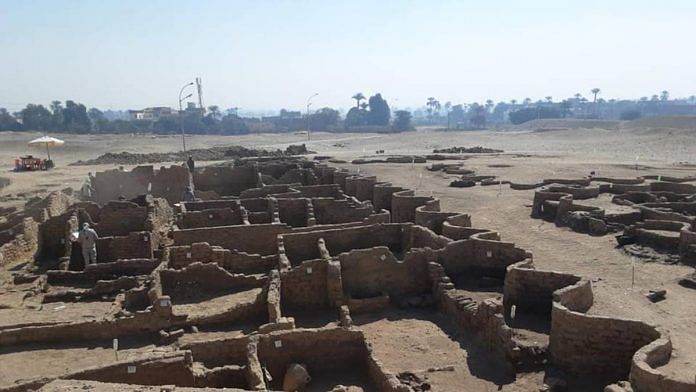Bengaluru: A 3,000-year-old town has been excavated in Egypt, in the southern city of Luxor. Dating back to the reign of King Amenhotep III, who ruled between 1391 and 1353 BCE, the city is believed to have flourished at the time when the Egyptian empire was at its richest. Experts believe this to be the most important find in Egyptian history since the excavation of King Tutankhamun’s tomb in 1922.
Formally named the Rise of Aten, the city is more commonly dubbed the ‘Lost Golden City’, and was also used by the kings Tutankhamun and Ay, who ascended to the throne after King Amenhotep III. It had been the object of multiple archaeological quests over the decades, but has only been discovered now.
“The Egyptian mission under Dr Zahi Hawass found the city that was lost under the sands,” said a statement released by the excavation team Thursday on Facebook. “The city is 3,000 years old, dates to the reign of Amenhotep III, and continued to be used by Tutankhamun and Ay,” it added.
Also read: The crisis in the Hashemite royal family, Jordan’s history & why it matters
The seal of Amenhotep III
Mudbricks, used in the construction of the houses and streets found by the excavation team, bore the seal of Amenhotep III, confirming the date of the find.
The city was divided into administrative and industrial quarters, and the residential area. Some of the things found at the digs include vessels, dyed pottery, jewellery, rings, and scarab beetle amulets.
Residential houses were found with solid, still-standing walls and rooms with objects of daily use. In the industrial quarters were found buildings that could have been used for making jewellery, where casting moulds for amulets and delicate pieces were discovered. Tools, probably used for spinning and weaving, as well as for metal works and glass making, were also found.
The excavators also discovered a bakery, complete with ovens and vessels for storing food and bread, the size of which suggested that it catered to a large number of visitors.
A big cemetery has also been partially unearthed. Inside were rock-cut tombs of various sizes that can be reached through stairs carved into rock, as was the custom of tomb-making in the region back then.
The researchers have also made some unusual discoveries, which they are unable to explain as yet, and which are still being studied. For example, they found two burial spots — of a cow and a bull — inside the rooms, the purpose of which is not immediately clear. Also discovered, was the burial of a human being with arms stretched out to the side and the remains of a rope wrapped around the knees.

A more informative find has been that of a vessel containing 10kg of dried meat, which bore the inscription, “Year 37, dressed meat for the third Heb Sed festival from the slaughterhouse of the stockyard of Kha, made by the butcher luwy.” The city appears to have been abandoned about a year after this; the researchers hope to find out why.
Betsy Brian, professor of Egyptology at John Hopkins University, Baltimore, USA, was quoted in the statement as saying, “The discovery of this lost city is the second most important archeological discovery since the tomb of Tutankhamun”.
Tutankhamun’s nearly intact tomb was discovered in 1922 in the Valley of the Kings by British archaeologist Howard Carter. It was packed with several thousands of objects spread out over four rooms. A stone sarcophagus held three coffins, the last of which was made out of solid gold and held the mummy of Tutankhamun. The discovery had attracted frenzied attention.
Also read: Mir Osman Ali Khan, Hyderabad Nizam who wore cotton pyjamas & used a diamond as paper weight
What the lost city can reveal
Excavation began near Luxor in September of 2020, between the temples of Ramses III and Amenhotep III, around 500 km south of Cairo. The objective was to find Tutankhamun’s Mortuary Temple. His successor, King Ay, had also built his temple in the region, close to the temple of Ramses III.
However, within weeks of digging, the team surprisingly started to discover mud bricks everywhere, and eventually excavated the well-preserved town of The Rise of Aten.
Seals and inscriptions found at site suggest that the city was occupied during Amenhotep III’s co-reign with his son, Amenhotep IV.
Historians hope that the discovery of this city will answer one of the enduring questions in Egyptian history about the establishment of a new capital, Amarna, by Amenhotep IV, also known as Akhenaten, the heretic pharaoh. Along with his queen Nefertiti, he broke off from what we now identify as the Rise of Aten, and founded Amarna.
The 18th dynasty of Egypt — of which Amenhotep III was a part — is considered to be unique as it had two women who ruled independently, Hatshepsut (1479 BCE–1458 BCE) and Nefertiti (1370 BCE-1330 BCE).
The Rise of Aten is named after the disc of the sun (called Aten in Ancient Egyptian), which was at the core of Atenism or the religion practiced during period of the 18th dynasty. Aten was different from other gods of the time, such as Ra, who were all worshipped in human form. Aten though remained a disc, with no human attributes.
Atenism was established by Akhenaten. After Akhenaten’s death, it is believed that Nefertiti ruled briefly, followed by Tutankhamun and then Ay.
When Tutankhamun became king, he restored the ‘Ancient Egyptian religion’ — a complex polytheistic system that had been prevalent before Akhenaten established Atenism.
The researchers hope the discovery of the Rise of Aten will help them find out if Tutankhamun repopulated the Rise of Aten during his reign, after Akhenaten abandoned it for Amarna.
(Edited by Poulomi Banerjee)
Also read: Delhi’s deserted monuments a delight for photographers now, but spell losses for vendors



